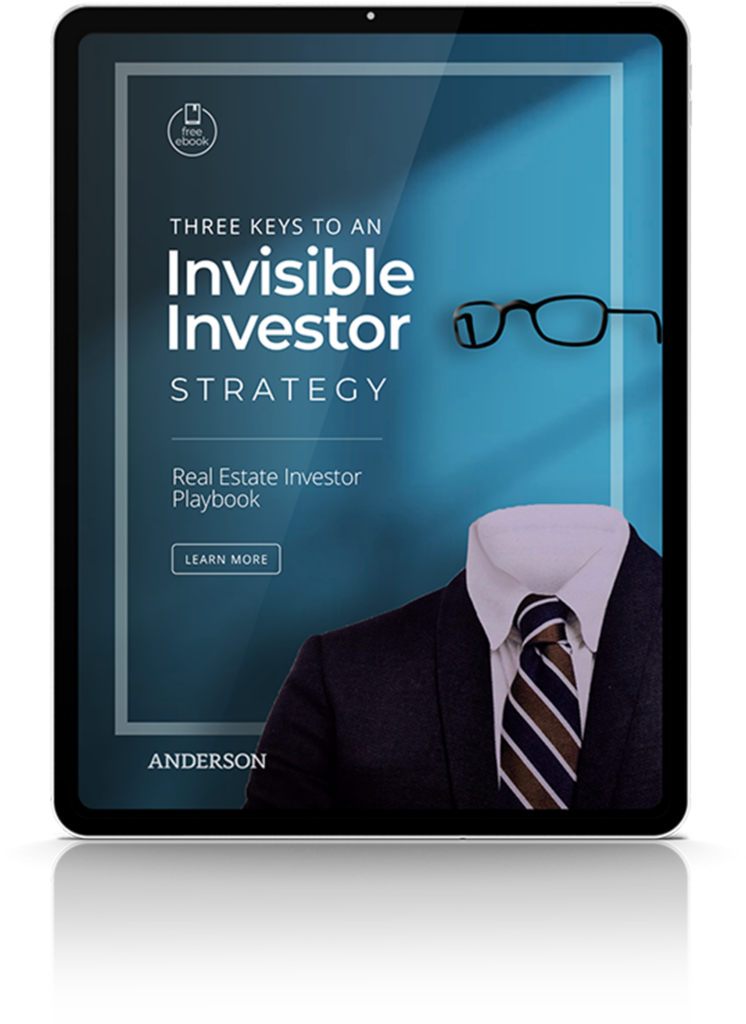

Want to invest in real estate, but don’t know how to pick the best city to invest in? Mid-term rentals might be your option. Join Clint Coons, Esq. and Dr. Rachel Gainsbrugh as they discuss the secrets of maximizing mid-term rentals that can generate up to $60,000 a year. Dr. Rachel Gainsbrugh of Short Term Gems to help us explore the benefits of this strategy and its potential for a wide range of investors in the real estate market.
Highlights/Topics:
- Gainsborough’s background
- Why start with short-term rentals?
- The luxury niche and mid-term rentals
- What standard “luxury” means in rentals today
- Competing with REITs
- Your avatar/customer dictates what properties you should invest in
- Serving large families for both vacations/displaced
- Allowing pets increased revenue by 30%
- Most displaced families want to stay near their work/school
- Where to list mid-term rentals
- How does the revenue/ROI/amount of effort compare – short vs. mid vs. long
- How to access training in Dr. Rachel’s methods
Resources:
Learn More About Dr. Rachel Gainsbrugh!
Full Episode Transcript:
Clint: What’s up, guys? Hey, it’s Clint Coons here. In this video, we are going to talk about mid-term rentals. You’re going to learn how you can take a normal property, and you can generate $30,000, $40,000 $50,000, $60,000 a year renting it out and what the tricks are, and how you can go out there and find these tenants, people who are displaced because maybe a man-made disaster or a natural disaster.
This is a whole different area of real estate investing that I didn’t even know existed. I’ve got an expert we’re going to be talking to today who’s been doing this, and she’s going to share with you the secrets to maximizing the mid-term rental space. Let’s get started.
Dr. Rachel Gainsbrugh, thanks for coming on. Before we get started, why don’t you tell everyone a little bit about your background because you’re a doctor, you’re in short-term rentals, and medium-term rental space, real estate investor? It sounds like you got a lot of balls in the air. I’m sure people are wondering, how are you putting this together?
Rachel: Thank you so much, Clint, for having me. Thank you for the content that you’re putting out there, and the education that you’re giving the community because it’s so needed. You have a lot of busy professionals out there who are looking for another way to stop exchanging their hours for dollars. I just can’t thank you enough.
A little bit about me. I’m a little girl from Haiti, which is the poorest country in the Western Hemisphere, south of Florida, and raised in Miami. I knew from the very start that I wanted to make an impact. I wanted to figure out a way that I can help others, so I went into the healing professions, but I quickly realized that healthcare burnout is real. I walked away with a ton of student loan debt.
My husband and I worked our fingers to the bone trying to pay it off. Eventually, when we got to the other side of it, we decided, you know what? We need to find a way to essentially stop exchanging hours for dollars. We need to find a way to work smarter, not harder, to get our money to work for itself. That’s how we really landed on real estate investing.
Clint: When you landed on real estate investing, though, you took a path that (I think) not a lot of people will start off with. Most people start with long-term rentals. I know short-term rentals are a popular area in the last couple of years, but you went all in. What did that look like for you to take that leap and not go the traditional route?
Rachel: I wanted to be really intentional because when we were paying down student loan debt, we essentially had burnt the candles at both ends. Being intentional was really determining which investment strategy is going to give us the best bang for our buck while simultaneously not putting us in a position where we just bought another job. What we did not want to do is divide up jobs.
I got really laser-focused on what this really entails. Not all of the marketing hoopla or anything like that. I really went out and spoke with the individuals who were wholesaling, fixing flipping, or long-term tenants, the ones that were really doing the thing, multifamily syndicators. I asked, let me see what the balance sheets are looking like. Let me see what the level of effort is really looking like.
I consumed a lot of podcast content like yours, bigger pockets, all of them just to really evaluate, what does it look like really behind the scenes? I wanted to peel the layer there. Although short-term rentals, yes, there was a lift behind the scenes, the numbers definitely penciled out. The balance sheet was looking really good.
When I niched into the luxury space, it was really, really lucrative. I said, you know what? This is how we can potentially work smarter and not harder, and create revenue streams that would exceed any of the other investment strategies that we were familiar with at that time.
Clint: As you were talking about, you moved into the luxury space. Again, you picked a niche, and that’s where you went. I think that’s important. For anybody who’s going to get started in real estate investing, find something that you identify with, you feel like you can monetize, and it fits with your lifestyle and how you want to invest in real estate.
What’s so interesting is that you started this route, and then you recognized that there’s another opportunity out there in this mid-term rental market. You’re the first person that I really saw that was starting to capitalize on that as I’m following your channel and your website. Could you explain to us what is the mid-term rental?
Rachel: The mid-term or rental is a rental that is not long-term where you have a tenant for one year. It’s not exactly a short-term where you have a guest for one or two nights. It’s in the middle, hence a mid-term rental. The mid-term rentals are 30-night stays, around there. It could be three months, it just depends from a legal perspective on which state we’re in, but about a 30-night stay to about a 6-month stay is considered a mid-term rental.
What’s interesting, Clint is that there are so many different avatars or potential guests that would need a mid-term rental. Let’s say someone is coming to the area to train at a local military base just for 30 days. They’re on a special assignment that they would need a mid-term rental. Or let’s say it’s an executive who is coming to be interviewed for a high-level role, a CEO role, and will take 3–4 weeks for him to go through all the processes. That’s a mid-term rental. That’s someone who needs a mid-term rental.
During Covid, a lot of our first responders would travel to different markets and rent out mid-term rentals. Our travel nurses rent out mid-term rentals. They’re typically on a 13-week contract, which they often renew if they’re going to stay on assignment at that particular hospital. Although we don’t cater to travel nurses, they’re in the biggest population of mid-term rentals as it relates to what’s most common in that conversation.
For us, since we have luxury single-family homes, some of which are in destination vacation areas and others are in suburban areas outside of metropolitan areas, those actually cater to individuals who are displaced from their homes due to a weather-related or a man-made disaster, unfortunately. Unfortunately, your house caught on fire. Well, you would need a place to stay with your family for three, six, or nine months, depending on the supply chain, depending on the contractor’s schedule.
Clint: Train derailment and chemicals are spilled everywhere.
Rachel: Absolutely. Those individuals who are displaced by whichever disaster would need to take advantage of a mid-term as their home is being restored or as the area’s being rebuilt.
Clint: You have taken your luxury homes. Maybe you can define for us what a luxury home is from your perspective for this type of market.
Rachel: What I love about this asset class like the short-term rentals and luxury is that modern luxury is not your grandma’s luxury. I don’t know if you’ve ever watched The Lifestyle of the Rich and Famous or The Gold. No, it’s not like that.
Clint: Streaming now, you know that, right?
Rachel: Yeah, I know. Oh, my goodness, I used to just watch that. Modern luxury is really different from traditional luxury. Ever since the Industrial Revolution, the actual accumulation of things, the possessions, and being able to order something and it gets shipped to you from afar, that’s not as luxurious anymore. You can grab something from Amazon. It’s there this afternoon, and I can grab the same thing.
It is not the accumulation of things, especially with the avatar that’s traveling now, the millennials, the Gen-Zers. They want to accumulate experiences. They want to accumulate unique experiences. They want to live like a local. They want to connect with nature, and reconnect with those that they’re traveling with.
The beauty of current and modern luxury travel has more to do with the journey, not just the destination. It’s all-encompassing, which is great. Of course, there are some tangible items as well. The default travel luxury bed is the king-size bed. We want convenience, keyless entry check-in, and checkout. Those are some of the kinds of things.
If you can create and curate a space where they can connect with one another, where it exemplifies the experience, where there’s great curb appeal, you’re able to really create something special.
There is, of course, ultra-luxury, which is you have the butler and the airplane pad or have a house with the hangar, that’s ultra-luxury, but it doesn’t have to break the banks. Modern luxury is about, can I put together dry goods for a recipe, and they’re having a local popular dish because you were thoughtful enough to put those things together, which is absolutely amazing.
Clint: It looks like little touches that you’re adding. What about the houses, though? I’m curious. You see a lot of people who will look for homes that have a lot of bedrooms and a lot of bathrooms because they’re catered to that, or we can get 12 people in here so we can charge more for it. What do you look for in your space when you’re advertising the mid-term rental? What does that look like? Is it a three-two?
Rachel: Yeah, at least. I would say at least a three-two, but I like a four-bedroom plus because a lot of time, for this mid-term rental avatar which we cater to which is a larger family, a lot of times, if you go small, you’re then competing with the REITs because they have all these two-twos, they can stand it up in 24 hours, put some rental furniture in there, because they have that infrastructure and the agreement with the temporary housing agencies that work with your insurance companies, you’re all staying to stay far. That’s already in place.
How do you live in that blue ocean when you’re not fighting with the feeding frenzy in the red ocean with the REITs that have 200–500 doors, depending on which market you’re in? The way that you outperform them really is the asset class. You want something that they would not be able to produce in volume, which is four, five, and six bedrooms. That’s how you will stand out from the crowd when it comes to catering to this particular avatar.
However, if you’re catering to a traveling nurse, they typically want their own private space, so understand walking a mile in the shoes of your potential guests. They want their own space. One bedroom if you have a guest house or a carriage house, a Casita, blackout blinds. Those individuals, the travel nurses or the travel, our respiratory therapists, and there are several different first responders, are going to want their own private space. A one-one guest house is what they would prefer rather than staying in the REITs.
Clint: That’d be the best of both worlds. You find one that’s got the four, four-five, four-six, and then you’ve got a one-one out on the back, you could really double down on that. Like you said, the avatars. How do you find those or target those avatars for your properties?
Rachel: What’s great about it is it’s really the other way around. My avatar dictates the asset that I’m looking to invest in. If I know that my avatar is myself, which is me, I travel with my husband, his siblings, and their children, their spouses, my siblings, my grandma, and grandpa, so I’m my avatar with two dogs and an estranged cousin that makes it some vacation every year, the timing on it.
If that’s my avatar, that’s who I decided to serve. Really, a smooth luxury studio in the middle of it, that’s not going to be the property that I’m going after. It really informs which types of properties I’m looking to invest in. I’m looking for something that has a little bit of a spacious backyard, something that’s going to have a vibe, depending on the actual market. A hot tub, and a swimming pool, are some of the things that are very popular, but it’s very market-dependent.
Clint: What I hear you saying is that you’re looking for something where you would want to stay, where you would bring people because the avatar is someone that’s going to have themselves possibly invite other people to stay with them for a while while they’re in that location. They’re going to be there for a longer period of time, so they want that sense of family around them that they would have when they’re in their home. Is that your generalization?
Rachel: Yes. That is my avatar. Our properties, I call them hybrids. Those who are visiting the area for a big family wedding and need it for a couple of nights are my short short-term rental guests. Our properties work for that avatar, those who are actually displaced from their home for a longer period of time.
I had a family of 10 who were coming out of an 11-bedroom home. Although ours is six bedrooms in this particular market, we were the only ones that could really host them. We love to serve the larger families for the displaced homeowners, as well as the larger families for vacation rentals as well, those who are visiting.
Clint: I got some questions on that, but before, this came to mind. You said to travel with your animals. Do you make sure that all your properties are pet-friendly so people can bring animals to the properties?
Rachel: Yes. I started off, I was not pet-friendly. I realized quickly that I was leaving a lot of money on the table. I would highly recommend, if anyone is not pet-friendly, they may need to consider that. Imagine if something happened to your home. Are you going to board Fufu for six months while your property is getting rented? They’re a part of the family, they truly are.
I was like, okay, I’m a luxury, I’m bougie, we’re not going to be pet-friendly. You know what? It didn’t work out. We kept getting asked again and again and again. Can we please bring Fufu?
What’s great about this asset class is you get to interact with your potential guests. They make it known, we can’t find anyone who’s pet-friendly. As I spoke with the temporary housing agencies, they said that pet-friendly is the number one amenity that they need. Eighty percent of their homeowners need pet-friendly accommodations, and only 10% of hosts are willing to offer them.
We turned on the flip on pet-friendly, and we were able to increase our revenue by 30%. We’re already doing well. There’s an additional 30% off for being pet-friendly and being one of the only ones in our market. Now that I just spilled the tea, your audience knows my secret sauce.
Clint: There it is. Where do you draw the line, miniature horses, ostriches?
Rachel: My favorite is just dogs. I don’t even like cats.
Clint: My partner is not going to be happy when he watches this video. We’re both cat lovers. He’s got a cat named after me, and I have a cat named after him.
Rachel: I’m dead. I’m so dead. That is hilarious.
Clint: I felt bad. My daughter, I’d lost my cat that I was really attached to, so she bought me a new one. I said, what are we going to name it? She goes, I don’t know, why don’t you name it after your partner, Toby? So we call it Toby. I felt bad, so I went and I bought my partner a cat for Christmas, and I put a little name tag. I said, hey, there’s Clint, you can have Clint now.
That’s interesting because you know one of the things that I do recognize sometimes is that people do want to travel with cats. You can see them on airplanes and things like that, but you draw the line with that, just dogs only.
Rachel: No, I allow cats. I don’t love it, but I allow it. I can’t be discriminatory toward cats.
Clint: If you’re thinking about this, we’ve talked about the properties and what you’re typically looking for. What about the markets? If I’m thinking about mid-term rental, I have properties in certain markets right now, how do I know if that’s the right type of market? If I was going to make this switch or if I want to start investing, where should I look?
Rachel: That’s a great question. Unfortunately, as long as there are a disaster- and weather-related issues, you probably are going to be trying to be open to serve this population. If you are listed on the platforms, if you’re wanting to serve this population, you can list it for a thirty-night minimum. You will be primed.
The markets that I see that aren’t very good for mid-term rentals are markets that experience extreme seasonality, such as Avalon, New Jersey that’s open probably 12 weeks out of the year. You have nothing but second homes. The primary homeowners have a primary home. If there’s a disaster at this beach home, they have a primary home. Those are the markets where I have seen that this strategy does not work very well. I may be wrong, but I haven’t seen it work well in those types of high-seasonality markets.
Outside of that, as long as there’s density and a market, there’s an opportunity. If you’re living on farmland also, everyone has 500 acres, and the neighbor has 500 acres, you’re not going to get a lot of inquiries. But if you’re living in a suburban area, or if you’re living in an area where there’s quite a bit of density and there are quite a bit of primary homeowners, this is a strategy that I have seen that works well.
What’s great about it is it pays very well because your temporary housing allowance is a percentage, really, of the rebuild value of your property, anywhere from 20%–30%, generally speaking. I’ve seen higher, which is really nice. That’s per year per claim. As long as there’s density, there are weather-related issues—you just mentioned the trail derailment a little bit earlier—there are man-made issues, unfortunately, in some of these areas.
I’m my own patient right now. I have a pipe that burst. It keeps happening everywhere. Everywhere you turn, there’s a pipe that’s bursting, a fire, unfortunately, a fallen tree. Those are the main three “catastrophes” that we were able to host throughout the area. You get to help someone in your community and get a nice payday as well.
Clint: What I’m hearing is it with a mid-term rental, unlike a short-term rental, per se, is that the typical avatar that people are going to be renting from me, a lot of times, come from a certain possible radius because they’ve been displaced. Now, they’re going to drive 70 miles and stay at your house, your property for 30 or 60 days. Is that my interpatient or do I have that wrong?
Rachel: It’s yes and no. I would say no first because, typically, if it’s a family who encountered (say) an accidental disaster, in order to keep their lifestyle and their way of living as close to what it is now as possible, they want to keep the kids in the same school. The radius is going to be the school district, within that same area.
I don’t work for FEMA, but if it’s the highest level catastrophe in an entire area that’s wiped out, then they would have to go further out. I would say, for most of our markets, it’s the first one and not the latter. It’s a fallen tree.
When I went on vacation, I came back home, the washer was on, and unfortunately, it wasn’t hooked up in the back. And it’s the swimming pool inside my house. I was on vacation for three weeks, and we’re starting to see molds. Those types of accidents or disasters happen more frequently, but we are seeing an uptick in weather as well, but accidental disasters like, oh, my goodness.
Clint: One of the things that I found that I like to put in the properties is Moen. It has Flo by Moen. It is phenomenal. Not only that, it monitors whether or not you’re using a lot of water. If you left sinks on and things like that, it’ll shut off automatically. You get an alert, hey, your property here, it shuts off on it. I’m like, hey, what’s going on over there? That’s a pretty cool feature.
Rachel: That’s great. Most homeowners don’t have that.
Clint: All right, that plays into what I was thinking, which means that if I have an existing long-term rental property, then I could consider turning that into a mid-term rental property, so I’d want to reposition that. What I heard you say is that you still advertise on Vrbo, Airbnb, and things like that. Is there a different website that is geared specifically toward mid-term rentals?
Rachel: I personally still advertise on Airbnb and Vrbo. Those who are looking to host travel nurses, they’re typically looking for properties on a website called furnishfinder.com. But in addition to Vrbo and Airbnb, I also list on a website called corporatehousingbyowner.com. That’s where a lot of the temporary housing agents look for properties as well. There’s another one, ALE Solutions. I’ll give that to you too, Clint, so you can add to the show notes.
You can just list your property and register there. I will say, there is an investment in Corporate Housing by Owner. The Baby plan is $300, and then it goes up to $900. It’s worth it to get the Baby plan because one booking will more than cover that. It’s definitely worth it.
Clint: You just gave me a lead into my next question. What does the money look like for a mid-term rental, versus a short-term rental, versus a long-term rental, as far as that cash flow?
Rachel: I love this question. I call it my ROI, but also my ROE, which is my return on energy. There are different types of mid-term rentals. I just want to break it down a little bit.
My sister’s a travel nurse. She is very frugal, which I get. She’s out there fighting for her life. Every dime that she makes, she wants to bring home to her son, and her family, to pay her mortgage. She’s looking for a nice, safe home—she’s a little bit bougie too, like me—but she doesn’t want to break the bank on it because she’s to take a lot of that revenue and bring it home.
I would say the travel nurses are going to be your most frugal. You might as well consider it close to a long-term rental, just maybe a little bump. That is one type of mid-term rental. The revenues are great there.
We have other mid-term rentals also here for those who are relocating. Have you ever seen an individual that sold their home and can’t quite close on the next home quite yet? That’s a mid-term rental situation. That usually falls under the relocation or home is an escrow mid-term rental. I would say the revenue on that is going to be better than the travel nurse, but not by that much because they’re in that dicey period of uncertainty.
There are other mid-term rentals as well. There are government contracts. There’s higher education. The revenue on the government contracts is pretty nice, but the level of the ROI, the level of effort, in getting into those is going to be quite high. You have to have cybersecurity on your website a lot.
It takes a lot to get up and running with those. You have to bid, and you have to be certified a certain way or registered a certain way. There are seven things, and it takes some time. It’s well worth the effort, especially if you have the time capital. Maybe you work a full-time job, you have a husband, two kids, and three dogs.
Clint: I can be demanding. I know. My wife told me that many times.
Rachel: Absolutely. Those are some of the other mid-term rentals. Those can be lucrative. Military families, not so much because their stipend is based on the GSA rates as well, but this is why I like the temporary housing agencies. The insurance companies saw a trillion-dollar surplus in 2021. Their pockets are very deep.
If you’re living in an area where the property values are healthy and the land values are moderate, the rebuild value is whereabouts the percentage for the temporary housing is calculated. Let’s say the property value is $400,000, and 25% is the loss of use coverage. That’s $100,000 of temporary housing allowance for that one incident per year.
Clint: Wow. I understand exactly what you’re saying when you talk about the ROE. I myself dabbled in a short-term rental. I bought a place in Hawaii. After a year and a half, I dumped it. I don’t have that energy to put into dealing with people every three days, seven days. It was just too much.
I can see that. For people that don’t want to do the short-term rentals but want to make more money than they are in the long-term rentals. I think one thing that hasn’t been identified because I haven’t really asked a question, but I see this here, is that sometimes, when you’re thinking about getting paid, dealing with these tenants, I imagine it’s not hard to collect because it’s probably on credit cards, run through the site, it’s all paid upfront.
Rachel: You have two tenants actually, technically. The insurance is on the hook on the lease as well, so they pay. I get checks from insurance companies.
Clint: That’s just awesome. I was meeting with a client yesterday. She was explaining to me that, to evict someone right now, it takes about six months to get someone out of a property here in Washington State. How frustrating it is? When you get all that money and you know you’ve got guaranteed, that’s phenomenal.
Rachel: I got a text message from one of the members of my community while I shared the strategy yesterday. He got one. He got his first check. It was $29,500 for a 78-day stay in Wisconsin, which is in the middle of nowhere. In Wisconsin, the mortgage is $2200 a month. I’m like, nice.
Clint: $29,000?
Rachel: I got another student whose hers was at $89,000 net. She’s been hosting a family from May to December. Her net after her mortgage, which was $1800 in Georgia, was at $89,000 and some change, I forget the rest of it. It’s transformative for them. It really is.
At first, she’s a teacher. She said I made 3X my annual salary with this strategy. I absolutely love it. I love it.
Clint: Your website is shorttermgems.com. I’ve got a link down below. You start talking about the people in your community and your students. Can you explain to them what you do on that side, because you have so much information out there for individual investors?
Rachel: When I was growing up, we didn’t sit around the table. I was like a latchkey. Mom and Dad were working there. My parents in Haiti were doing well. When they came here, they were working in factories and cab driving. We didn’t have those talks around the table, where this is what a 1031 exchange is, this is a little bonus depreciation, cost segregation. That wasn’t happening.
We were not set up that way. Financial literacy was not a part of the conversation because no finances, really, to literate your parents. When I started to show up in these rooms and to be in communities where these conversations were the norm, I learned as much as I could, and I decided, I’m going to bring it to my community of other individuals who are like me, who did not experience this, who were just like me and just grinding it out.
I have a Facebook community where every week I go live. I share, I train, and I interview others in the industry, whether it’s a tax strategist. That’s just going to show you how to ditch the burnout culture, get a little bit of margin, and breathing room, because what we learned was get your education, work your fingers to the bone, and there’s another way.
Clint: Absolutely. You train as well on individuals, how to create mid-term rentals, and how to build that business out, correct?
Rachel: Yeah, I do. Every quarter, I hold a live workshop. It’s a two-day workshop where I make sure no question goes unanswered. I hold everyone’s hand from step by step to baby step wherever you’re at.
Like you Clint, you say you have long-term rentals you might want to reposition. Great. Some people have nothing to start with. Great, let’s start with where you’re at. If you tap into my community, I have a free list, 75gems.com. Once you tap into there, I’ll definitely connect you to all of the other resources.
Clint: Awesome. I want to thank you for coming on with us. Your story’s fabulous. All of those links are in the show notes. Guys, listen, if this is something you’re considering, or if you have never heard about it before, go get educated. Click those links, and go to her website. As she’s been telling you, there’s a ton of information.
I’ve been through the site. I would say it’s a bit transformative because it changes the way we look at our real estate, our investing, and what we can do with it to make more money. Those checks that you were talking about, I’d love to be bringing in a check like that off just one property for six months.
Rachel: I want to add also for those who may be facing regulatory restraints as well, this has been the answer to a lot of the members in my community who are concerned. There’s a new regulation that’s coming down. There may be a ban or limitation on permits. These 30-day days are something that I think everyone needs to be thinking about as well as putting an extra tool in your toolbox.
Clint: I know. I’m going to send the link to this video. I know one of my clients, she’s a physician, her husband’s a physician, and they are closing on some townhomes in the Dallas area. What she didn’t know is she was going to use short-term rentals for these properties. She didn’t pay attention to the CCNRs that limit the minimum 30 days. We’d had that mid-term rental discussion. This was a couple of months ago before I started following you. It didn’t even cross my mind.
Rachel: It can save that deal. It could literally save that deal for her. You’re right.
Clint: That’s exactly right. That’s it right there because that’s what she was planning to do. This is (I think) really going to help her. Thanks for coming on. Anything you want to leave in passing with everyone who’s been watching?
Rachel: Thank you so much, Clint. Everything is figure outable. Whenever we face an obstacle, there is a way around it. There’s a way through it. Just keep tapping into your community, keep tapping into those who are doing good things. There’s definitely a way to figure out how to take your next best step.
Clint: Right. Thank you.
Rachel: Thank you.












